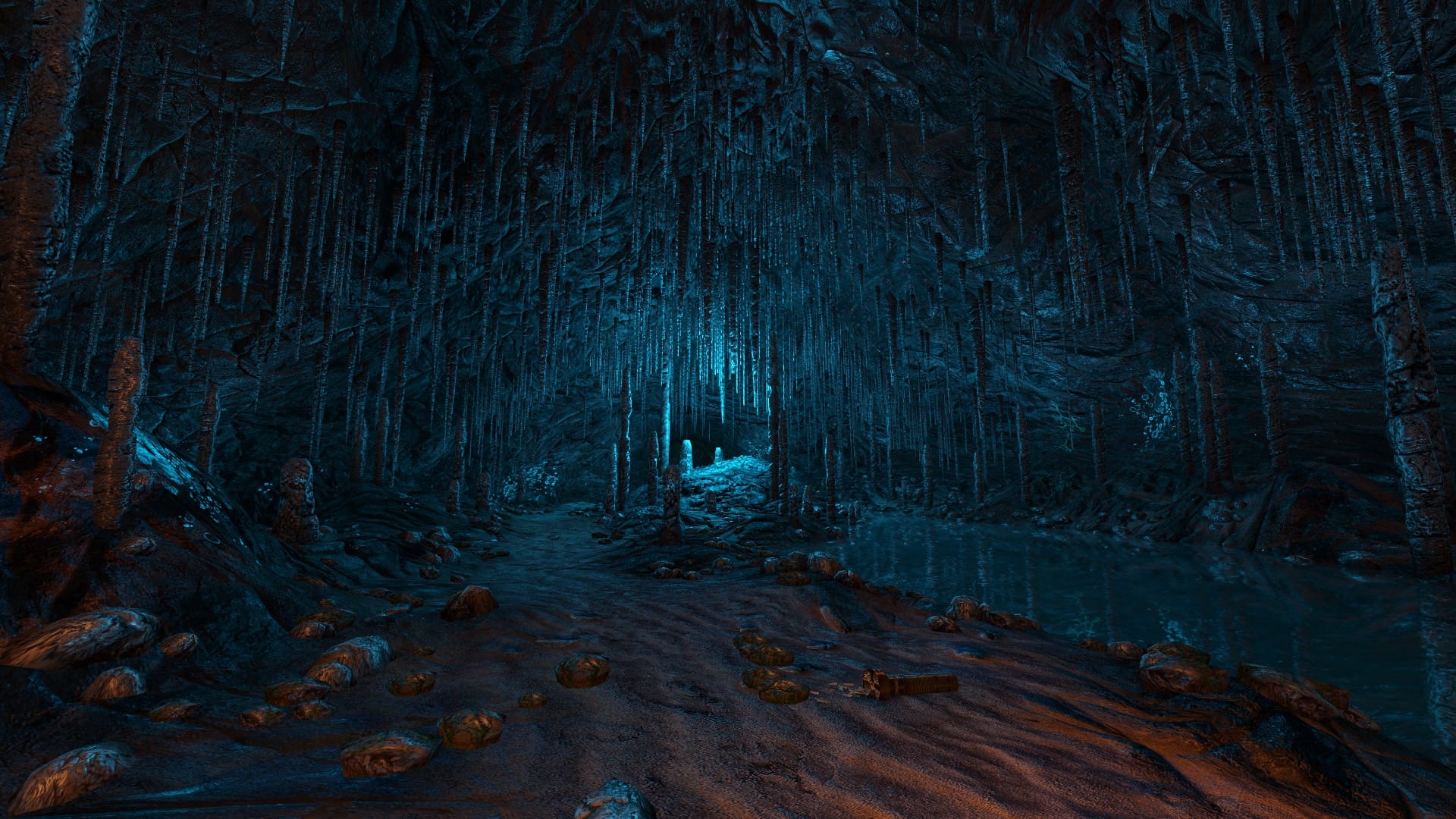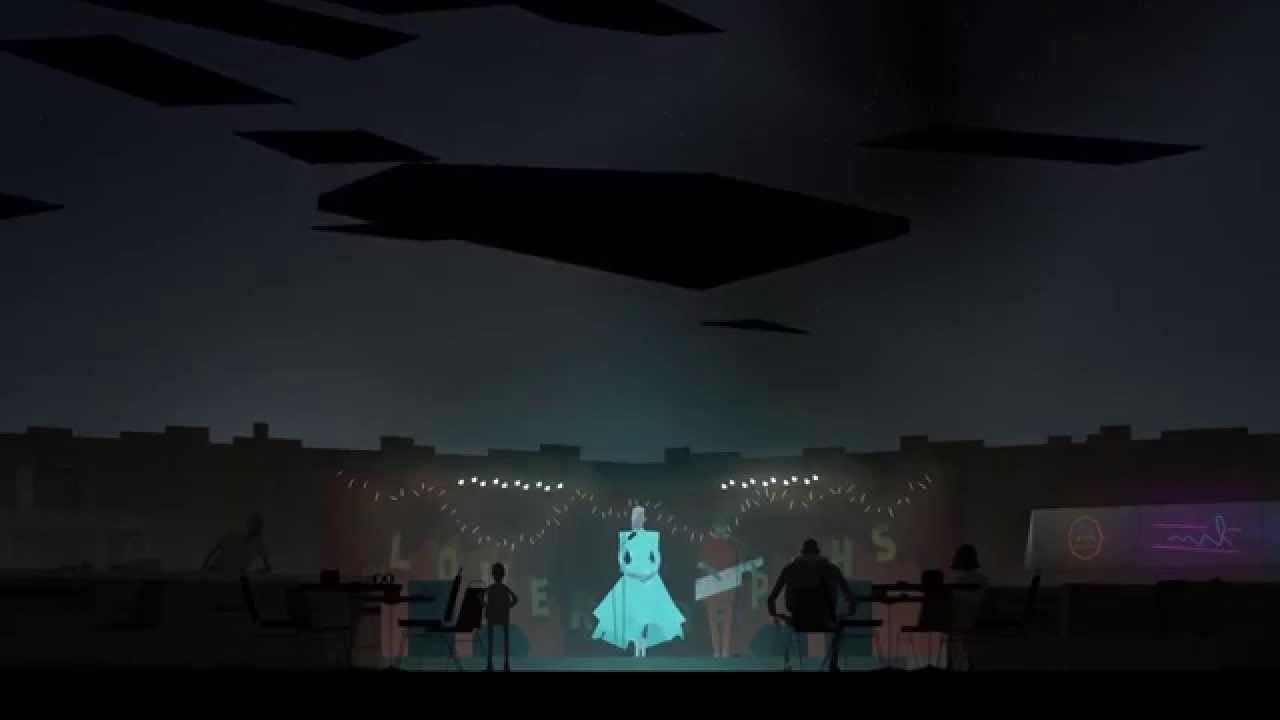Stillness is the move

In 1952 Yasujir? Ozu arguably perfected his style of filmmaking with Tokyo Story, an examination of familial breakdown, of declining traditions, and of modernising Japan. His was a style that grew from stillness—the camera moves once throughout the film, leaving a series of perfectly composed scenes that ask the viewer to focus on the poignant domesticity he details. It was an original and experimental form that influenced countless film-makers and, as an aesthetic, finds continuity within the medium of videogames.
a means of sidestepping melodrama
I remember studying Ozu at college. It was, initially, a slog. Tokyo Story moves at a glacial pace, extended shots take precedent, and the camera is positioned at tatami level, thereby placing the viewer in the midst of the scene. It’s a far cry from the mega-spectacle that cinemagoers now experience—propulsive, action-packed stories that unfurl through an array of dazzling, technical edits. If one were looking for an antithesis of modern, mainstream cinema, Ozu would be a good bet. The stillness he employed was a means of sidestepping melodrama. It was a means of fostering a philosophical and aesthetic reflection in himself and the viewer, prompting us to look hard. And this was achieved through a still camera, asking the viewer to consider every detail in the frame.
The videogame industry, though, draws on the hyper-kineticism favoured by Hollywood, seen perhaps most strikingly in Just Cause’s brand of destruction fetishisation. The stillness utilised by Ozu is absent, obsolete. More bracing still is the Call of Duty series: bullets ricochet off concrete; you, the player, take hits to the body; the screen becomes bloodied, red around the edges; and the cacophony of war rages. It’s representative of many maximalist experiences that chuck as much visual and audial information at the player as possible. Many popular multiplayer experiences, too, shun stillness as a design choice. Stillness is time wasted that could be spent earning experience, logging kills, or maintaining and upgrading your character. It’s a defunct currency in the contemporary gaming landscape, but one that is capable of facilitating meaningful experiences that ask different questions of the player, questions that center around reflection and imagination.

2012’s Dear Esther, from The Chinese Room, is a videogame which actively harnesses Ozu’s philosophy of stillness, where the player is allowed the time and space to absorb the ethos of each scene. Eschewing traditional modes of interactivity, it allows the player to walk, to look, and to listen, and nothing more. Slowness is in-built. Near the beginning of the game, after traversing some cliffs, you venture into a cave, and illuminated paintings or markings become clear. A mixture of pagan ritual and chemical formula, they gleam a supernatural blue in the residual evening light. I stopped to examine each in turn. Dead fish and clothes are strewn across the cave floor, dirtied, rotting, decomposing in the damp air. And I wonder if these were the etchings of some hermetical loner, or whether they are ancient pieces of art, millennia old. I pass my torch over them as the light fades.
stillness allowing for moments of reflection.
The scene shares similarities with those found in Werner Herzog’s 2011 documentary Cave of Forgotten Dreams. Herzog takes the viewer deep into the Chauvet Cave of France, a tomb of pre-historic paintings. The camera slowly pans across a close-up of the paintings guided by the light of a battery-powered torch, deftly drawing comparison between what the viewer is witnessing and what the painters would have witnessed thirty thousand years ago. Lights flicker, shadows are created, and the animals take on a sense of movement. They don’t move, of course, but Herzog has provided the framework for us to imagine that they do; to transport us back to the Palaeolithic period, and to hoist us out of the cave up to the bright, densely wooded landscape. Central to this process is stillness—the cumulative effect of quiet and stasis.
But stillness isn’t exclusive to visual design, as seen in Dear Esther. A sense of stasis is utilised by The Last of Us, from 2013, though in this instance it is in terms of its narrative beats. Salt Lake City is in the throes of spring; Joel and Ellie encounter a giraffe thriving in the dehumanised environment. An ambient drone builds, compounding the moment, stretching it, and, as you reach the giraffe, a button prompt asks the player to pat and stroke the animal. It’s a gentle moment, in opposition to the horror of previous scenes. One giraffe becomes a family, and the game’s designers ask the player to question whether the apocalypse really is the worst thing in the world. It’s reminiscent of the 2003 zombie film 28 Days Later, in which the protagonists look out across a green field as a drove of horses gallop across. In both shots, themes of family, togetherness, and nature’s resilience are presented in a quietly poignant manner, the stillness allowing for moments of reflection.

These are images and scenes which sit outside of the immediate narrative; they are auxiliary moments that deepen rather than hasten one’s experience. Terrence Malick’s 2005 film The New World is peppered with instances such as these. Extended shots of nature—light breaking through the canopy or a stream gurgling—are interpolated into human drama. Parallels can be drawn with the episodic game Kentucky Route Zero. At the close of Act II, Conway and his companions find themselves in a forest. An old standard, “Long Journey Home,” rings out, plucked mournfully on a banjo, and a giant bald eagle sits perched upon a fallen tree. The eagle looks dejected, broken, and lost. Conway and Shannon engage in banal conversation; the song loops, the eagle sits, and the stillness of the frame forces the player to look, and to ruminate on these symbols and their narrative implications.
they are defined by their interactive inaction
These moments all share a common theme; they actively ask the player to step back from traditional forms of videogame interactivity. Yes, traditional methods of input are utilised: triangle allows Joel to pat the giraffe, and Conway and Shannon’s conversation is still navigated utilising clicks of the mouse. But these scenes are not dominated by their interactivity in terms of prescriptive button inputs and subsequent movements on screen. Rather, they are defined by their interactive inaction. And yet, they are deeply engaging moments. It’s a different brand of interactivity: one created from a place of stillness, but one which fosters imagination and contemplation in the player, hoisting them from the screen and into their heads, whilst always remaining in the game-world.
There is an epitaph on Ozu’s gravestone, only a single character, that transcribes as mu. It means void/without/nothingness. It’s a crucial concept in the traditional arts of Japan: the emptiness that provides heightened meaning to form, the silence that heightens the meaning of sound. And stillness is a necessary component of videogames that gives heightened meaning to its movement and its interactivity. It’s the negative space that allows us time to imagine—to stop, pause, and reflect—and further immerse ourselves in these digital creations.



